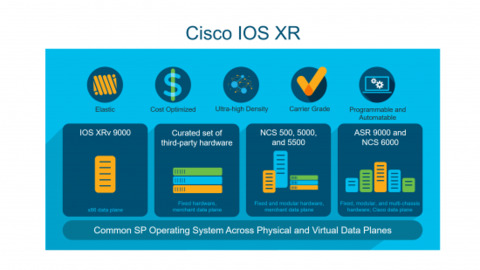Cisco is disaggregating its IOS XR operating system, heeding the call from service providers that have expressed a desire to have their vendor partners offer production-ready, open source, next-generation SDN solutions.
As part of this effort, Cisco is expanding its hardware platforms supported by IOS XR as well as its set of open APIs.

“This is about the flexible consumption of innovation that drives business outcomes,” said Sumeet Arora, SVP of engineering for Cisco’s core sofftware group, in a blog post. “The Service Provider market is in the throes of dramatic change. Customers tell me they have starkly different expectations of their business partners than when the Internet was a younger, less complicated place.”
Through its expansion of hardware platforms supported by IOS XR, it will be able to run on three types of configurations: fixed or modular routers developed either by Cisco or merchant silicon; x86 servers as virtualized software across public clouds; and a curated set of third-party devices.
RELATED: Cisco takes on service provider network automation with Crosswork platform
By adding to its suite of open APIs in Cisco IOS XR, customers will have greater flexibility to develop their own innovation on top of Cisco IOS XR software as well as the ability to automate operations and control their networks through software.
As part of enhancing its Open APIs, Cisco will offer Model-driven programmability and the recently announced Service Layer API that it used to demonstrate Facebook’s Open/R protocol running on IOS XR.

Arora said that the new Open Forwarding Abstraction (OFA) API “provides a logical representation of all the forwarding and telemetry capabilities of the underlying hardware.”
A developer can use these capabilities to specify the packet forwarding and processing treatment they want from the data plane and provide a hardware-agnostic mapping function to other network software stacks written for a specific forwarding abstraction or data plane paradigm.
Cisco is also making it easier for service providers to procure these capabilities for their networks by realigning the commercial offer structure for Cisco IOS XR software. Under this new structure, service providers can take advantage of a flexible consumption model with pay-as-you-grow (PAYG) terms and conditions and built-in provision for investment protection and ongoing innovation access.
Additional features include network-wide software licensing with resource pooling permitting capacity to be shared across the network and reduced initial capital investments while permitting capitalization of new software features/upgrades.
Cisco’s new initiative reflects a desire by the larger service provider community for more disaggregated and open source networking platforms.
Just in time for this week’s Open Networking Summit, AT&T, China Unicom, Comcast, Google, Deutsche Telekom, NTT Group, Telefonica and Turk Telecom, all of which are partners in the Open Networking Foundation (ONF), announced a new strategic plan for the ONF to move open source, next-generation SDN solutions into production mode.
These operators are moving to create what the group collectively calls Reference Designs (RDs), which will combine component projects into common platforms upon which operators will build solutions.
With these RDs, service providers intend to make clear to the industry what solutions they plan to procure and deploy. ONF said that the whole effort is driven by the fact that operators are ready to deploy, but the right supply chain is not yet there to deliver what they need.
